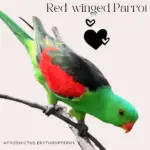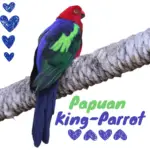
Olive-shouldered Parrot 35 cm. Similar to female A. erythropterus but brighter, more yellowish-green on head and body, darker mantle and upper back with blue margins, bend of wing blue, inner median and lesser wing-coverts yellow.
Female lacks blue on mantle and back, and blue, red and yellow on wing. Immature like female but without yellow in wing. Race wetterensis smaller, with little yellow and less red in the wing.
Aprosmictus jonquillaceus Scientific name definitions
- NT Near Threatened
- Names (16)
- Subspecies (2)
Systematics History
Editor’s Note: This article requires further editing work to merge existing content into the appropriate Subspecies sections. Please bear with us while this update takes place. Forms a species pair with A. erythropterus. Two subspecies were recognized.
Subspecies
SUBSPECIES
Aprosmictus jonquillaceus wetterensis Scientific name definitions
A. j. wetterensis
Distribution
Wetar, in NC Lesser Sundas.
SUBSPECIES
Aprosmictus jonquillaceus jonquillaceus Scientific name definitions
A. j. jonquillaceus+1
Distribution
Timor and Roti, in SC Lesser Sundas.
Distribution
Editor’s Note: Additional distribution information for this taxon can be found in the ‘Subspecies’ article above. In the future we will develop a range-wide distribution article.
Habitat
Primary and secondary monsoon forest, savanna woodland, lightly wooded cultivation, and scrubby secondary growth, up to 2200 m.
Sounds and Vocal Behavior
The commonest vocalization is a diagnostic disyllabic shrill “chee-ik”. When perched also more raucous calls.
Conservation Status
Not globally threatened. CITES II. Currently considered Near Threatened. A BirdLife “restricted-range” species. Fairly common, although habitat destruction has somewhat restricted its range.
Small numbers present on Wetar, 1989 and 2008–2009. Trade levels were not excessive in the 1980s, but in the 1990s zero quotas, recommended while uncertainty exists over total population size, have been flouted.




















